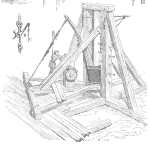
Originally published in the ASQ Reliability Review, Vol. 12, No 3, June 1992
Insert these pages into your copy of MIL-HDBK-217. The boldface text is changed to MIL-HDBK-217E [1], section 5.2, on parts count reliability prediction. The changes explain how to use “Paretos,” proportions of parts failing in the field, to compute a reality factor that makes predicted Paretos match field Paretos. You can use field Paretos to calibrate predictions for new equipment. You probably have field Paretos on related parts used in your other equipment, which is now in the field. Remember, the field determines reliability.
[Read more…]













